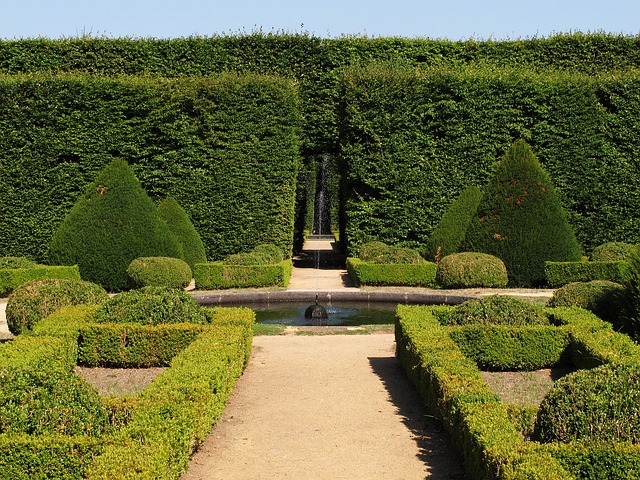If the grounds of your house are large and you have sprawling areas of lawn and pavement, you might like to consider dividing up the garden into a series of ‘rooms’. Whilst this concept runs rather counter to the idea of being able to show off the size of a property in one glance, the creation of intentionally-framed spaces within your garden will make the visual and physical experience of the garden a much more interesting one.

Image via pixabay.com
Consider your garden as you would when planning a new home. Even if the layout of your house is essentially open-plan, there will still be some divisions to separate recreation areas from utilitarian ones and walls or objects which break up the ground plane of the home.
The idea of garden rooms is by no means new. Ancient Roman villas often contained peristylium (or columned internal garden courtyards), an atrium and enclosed garden zones adjoining the villa for orchards.
Medieval garden imagery is also laden with the concept of garden rooms, of seclusion and contemplation.

Image via pixabay.com
The complex of the Palacio de Generalife (Granada, in Spain), originally began in the early C14th, consists of various garden rooms, albeit very large ones – the water-garden courtyard and the courtyard of the Cypress amongst them.
Even if your garden spaces aren’t as large as those of a medieval castle or a Moorish palace, the principles that were employed in the creation of the gardens on such grand sites can be used in standard residential situations.
Landscape appreciation lies partly in a place being an unfolding story. The most interesting man-made landscapes are often those where the viewer is not ‘blinded’ by the full extent of the site in one hit. Creating a sense of anticipation in landscape spaces is as important as it is in building design. In the preparation of a design, a landscape architect will often provide glimpse views of a whole site but not disclose every aspect of the place from a single point.

Image via pixabay.com
In your garden, don’t be afraid to experiment with division of spaces and the concept of gradual revealing – especially if you have a large property. Gardens are wonderful when they are developed to be sequential experiences. Good examples of ‘the slow reveal’ can be seen in some of the grand British estates developed in the C18th – like Stourhead.
In a standard residential situation, there are many types of elements than can assist in the development of garden rooms – hedges, small feature trees, privacy screens, ha-ha walls (which support changes of level), stairs, garden art, lighting and changes of surface material being just a few.
For those of you sitting on a slightly smaller patch of land than Stourhead, division of garden spaces can still be very important and the creation of outdoor rooms can still be achieved in very elegant ways. The already quite compact gardens of the below residence in San Francisco were ‘subdivided’ very beautifully with divisional screens, hedges and feature walls.
- Top-Five Farm Gate Signs Ideas - August 17, 2022
- 7 Benefits of Engineered Wood Flooring - January 27, 2022
- How Smart Homes are Impacting the Interior Design Industry - January 10, 2022












August 24, 2015
The examples you’ve given are quite appealing. I like the idea of having internal garden rooms or courtyards provided that the property is indeed large. Would it suit smaller residential gardens, though? One tip I could share with you is to use a specific type of grass called Sir Walter . This type of turf can tolerate the heat or shade caused by your feature walls.